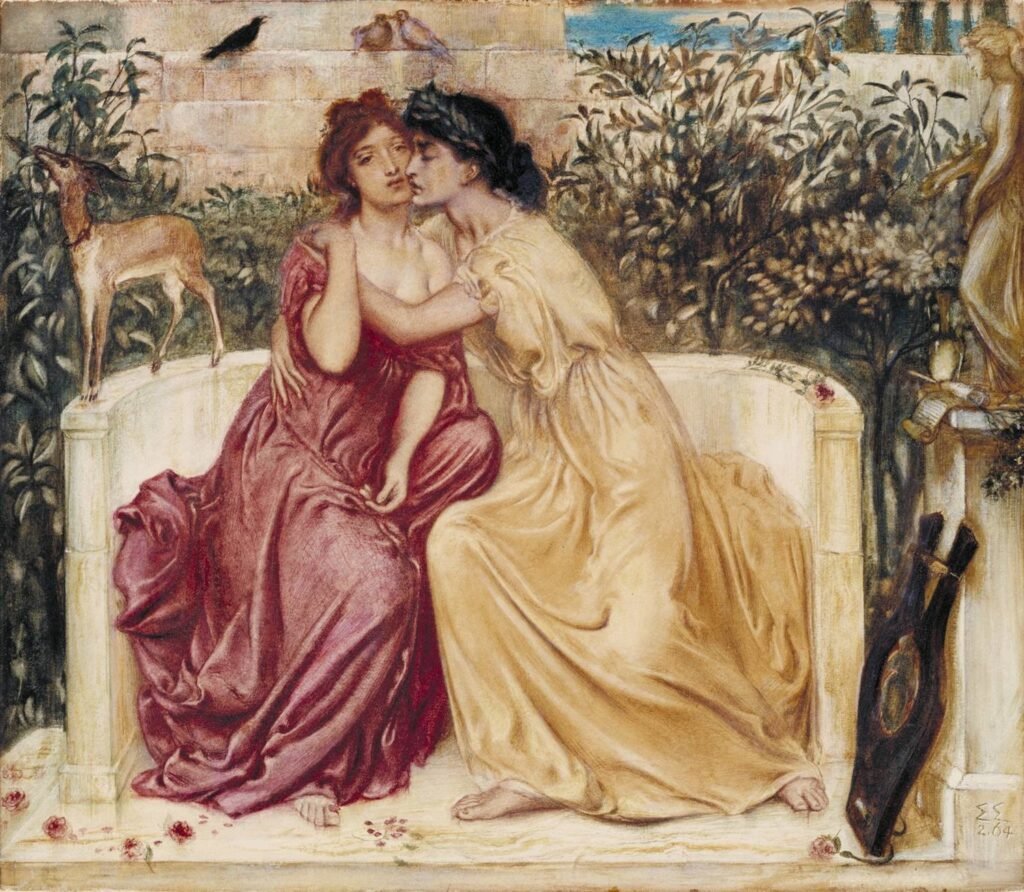Homosexuality has prevailed in many cultures long before we could ever explicitly label it. The nature and attitude that surrounded same-sex relationships varied across these diverse cultures, however, traces of its existence have stayed hidden through history.
However, ancient Greek culture, in particular, is one where same-sex relationships (males to be specific) were not only accepted but given religious validation and important educational and social functions. In Ancient Greece, male homosexuality in particular was an integral part of social, cultural and political life.
Male homoerotic relationships were celebrated in art, philosophy and poetry, and we can see this in the works of Plato, Xenophon and Aristophanes. Plato’s Symposium describes love between men as the highest form of love, transcending physical attraction.

Unfortunately, female homosexuality was significantly less documented. Erotic or sexual relations among women have always seemed to receive less attention than such relations among men. With time, though the term “Lesbian” came to be associated with women’s homosexuality throughout the English-speaking world and now in every corner of the globe.
Now, the word lesbian has an interesting history behind it. It relates to a specific place in Greece. The island of Lesbos off the Aegean Sea is where the term has been coined. The word means “from the island of Lesbos.”
It is believed that the island was inhabited since the Neolithic age, but it came to limelight only during the Classical Age of Greece. The island was mentioned in Homeric epics and myths. Sometime around 630 BCE, a woman named Sappho was born on the island. Over time she went on to become a great poet and wrote extensively on love. Sappho, the famous poet from the island of Lesbos became emblematic of female homoerotism. Her poetry had a significant cultural impact, as it expressed a deep affection and desire for other women. The etymology of the words ‘sapphic’ and ‘lesbian’ is attributed to Sappho, the resident of the island Lesbos. Sappho was regularly counted among the greatest of poets and was often referred to as “the Poetess,” just as Homer was called “the Poet.” Plato hailed her as “the tenth Muse,” and she was honoured on coins and with civic statuary.

Only fragments of her poetry remain, and yet they have established a community that reveres her as a foremother. The interpretation of her poetry has varied with different translators and at different times, however, many scholars claim the emphasization of the erotic nature of her relationships with other women. Her work is a broader definition of lyric poetry, and it explores themes of love, passion, beauty, sexuality and desire, with personal emotions and experiences, characterised by emotional intensity and directness. Her image as a lesbian poet has become central to academic and popular conceptions of female homoerotism in the ancient world.
Sappho’s work and speculation about her life enjoyed a resurgence of popularity in the Victorian era. Though the material was limited, at that point, her personage became associated explicitly with female homosexuality. Perhaps some women of the time believed that her work had been intentionally destroyed, her reputation sanitized, so as not to be a threat to the heterosexual patriarchal order. Fictional accounts of her life filled in the gaps with popular imagination. During much of the Victorian era, the term sapphist was used to describe a woman who loved women. In 1890, the term lesbian was first used in a medical dictionary. Yet, how long it had been in common usage is anyone’s guess.
For decades lesbian and sapphist were used interchangeably. However, eventually, lesbians won. Why sapphist fell by the wayside cannot be said. But as with sapphist, the term lesbian served an essential role for women who identify with it. It tied them to the classical era, a time when great art and literature were celebrated and being homosexual wasn’t vilified.
And as for the island of Lesbos, it’s still an island and people still reside there.
Given below is a fragment of Sappho’s work
Awed by her splendour
Awed by her splendour
stars near the lovely
moon cover their own
bright faces
when she
is roundest and lights
earth with her silver

By Sampurna Majumdar
Sampurna Majumder is a communications professional born and raised in Kolkata. Fascinated by creativity from a young age, she has a deep love for music, literature, and world cinema. An avid reader and traveler, she holds a Master’s degree in Literature from the University of Delhi.














